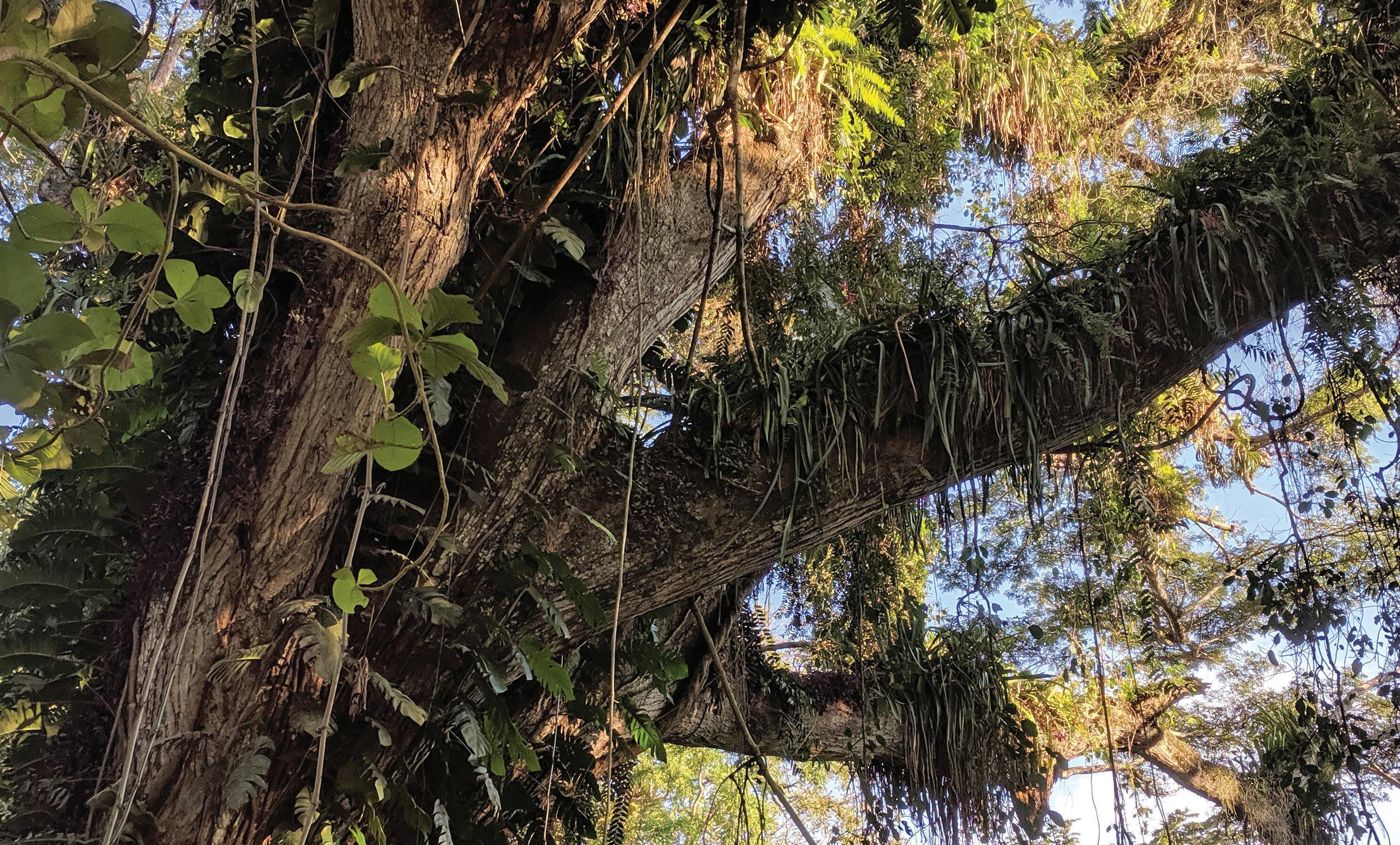
4 minute read
Seeing the forest for the trees
R. Max Holmes, President & CEO
George Woodwell recognized decades ago that there is no solution to climate change without protecting tropical forests. That is why Woodwell Climate scientists have focused on forest ecology since we were founded in 1985, and why to this day we maintain active research and policy programs in Earth’s great tropical forests, including the Amazon and the Congo. For a livable climate, it is absolutely essential that the vast quantity of carbon contained in tropical forests—built up over centuries through the process of photosynthesis pulling carbon dioxide out of the atmosphere stays in forests and out of the atmosphere.
While progress has been made, the reality is that tropical deforestation continues, threatening climate as well as biodiversity, water cycling, and the rights and livelihoods of local and indigenous people.
I have long wished that people would recognize and appreciate the intrinsic value of tropical forests—their beauty, their majesty, their biodiversity—and that would motivate them to protect these incredible landscapes. Talk of “valuation of ecosystem services” and the like, essentially trying to put a dollar value on the priceless, felt degrading to me.
Begrudgingly, my view has changed. I’ve come to accept that as long as more money can be made cutting trees down than keeping them standing, the future of tropical forests and hence global climate is bleak. I’ve also come to better appreciate the challenges of some of the people deciding the fate of tracks of tropical forests, be they poor farmers in the Amazon struggling to feed their families, or government officials in the Democratic Republic of the Congo trying to balance forest conservation with the need for economic development.
If we all benefit from tropical forests, who then pays the bills? In other words, where could the money come from to overcome the short-term economic incentive to cut down tropical forests? Philanthropy can and does help, but the scale of the need greatly exceeds the capacity of global philanthropy. International monetary commitments brokered through the United Nations also help, but there is a long and checkered history of lofty commitments followed by broken promises. So the chainsaws and bulldozers continue their work, and tropical forests continue to disappear.
Where do we go from here? How can it become more profitable to preserve tropical forests than to destroy them?
The most promising possibility, I believe, lies in the potential of carbon markets to unlock massive amounts of private investment to protect, manage, and restore tropical forests. As businesses around the world are making net zero pledges, they need to aggressively reduce their emissions. This won’t happen overnight, and not all emissions can be eliminated with current technology. So there is both a short- and long-term need for carbon credits to offset remaining emissions. And one of the largest potential sources of carbon credits comes from nature-based climate solutions such as protecting or restoring tropical forests.
Anyone following the evolution of carbon markets will recognize that they are a mess. Over the past several months, numerous exposé news stories have highlighted the challenges and failings of the current state of the market, without doing the harder work of trying to figure out the path forward. This has shaken market confidence (which was already shaky), threatening the viability of the market and shrinking the investments that are essential for the future of tropical forests and global climate.
At Woodwell Climate, we believe that carbon markets can be a force for good for forests, for forest-dependent local and indigenous people, and for global climate. And we believe that our science has a critical role to play in charting the path forward.
Over the coming months, you’ll hear more from us about this exciting, controversial, and challenging topic. It is the focus of one of our three strategic initiatives: Unlocking Landscape Opportunities for Climate Solutions (UnLOCS). We will leverage our deep on-the-ground experience in the Amazon and the Congo rainforests with our world-class expertise in satellite remote sensing, big data, policy engagement and public communications, to bring transparency and credibility to carbon markets in service of climate, nature, and people.
As George Woodwell wrote in 1998, “The forests of earth constitute a capital asset that sustains the world’s population.” Our task now is to figure out how to incentivize the owners of those assets to maintain their forests for the greater good. Carbon markets offer a way of doing so.
Onward.










